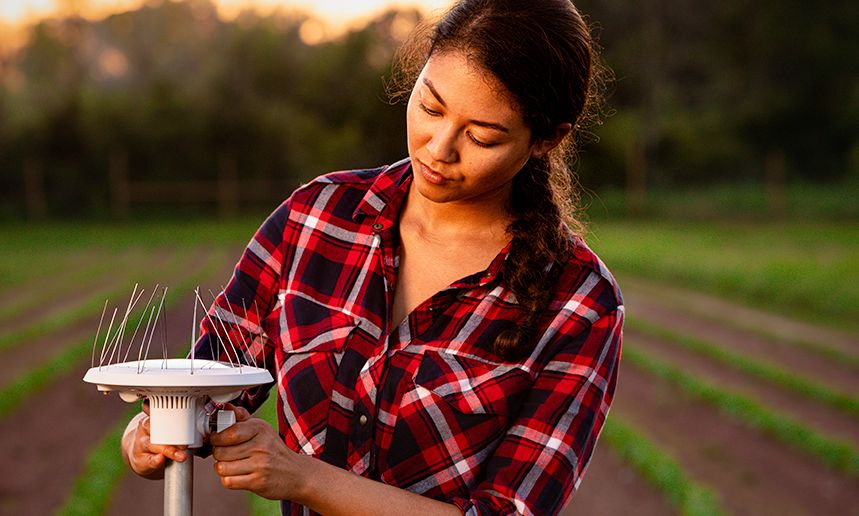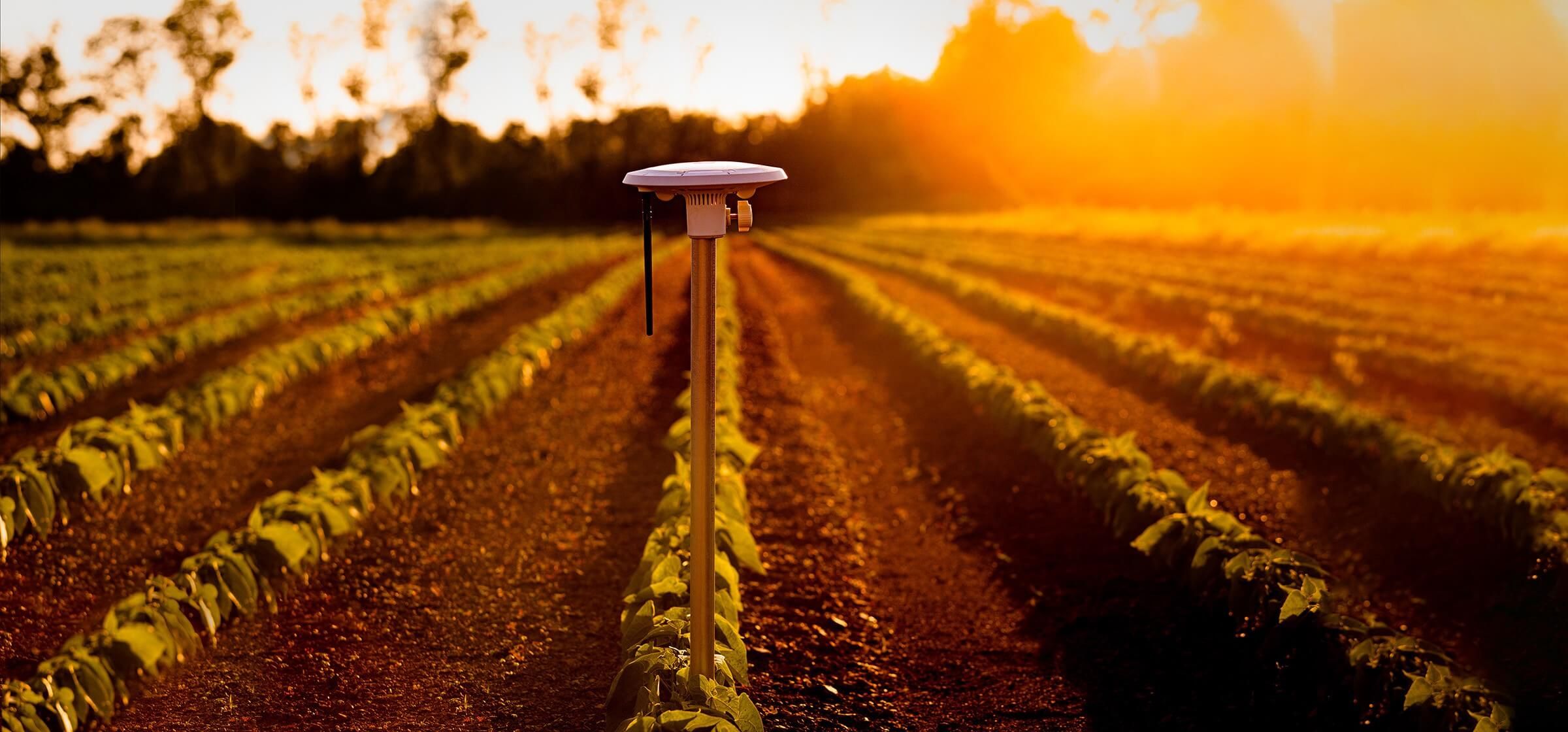Long Foretold, Long Last: Actionable Data Enables Better Phenotyping
Our previous blog post explored the challenges seed breeders and geneticists face today. Now, we will dig deeper into the ways Arable’s ground-truth weather and plant data enhance researchers’ ability to innovate and bring new, nutrient-dense varieties to market faster.
As we learned, just about any variable found in a microclimate can affect plant phenotypic expression, including temperature, exposure to sunlight, precipitation amount, and soil moisture retention. Here are some of the data points that Arable collects, and how they are relevant to seed breeding.
The Arable Mark 2 in one easy setup.
Precipitation
HOW: Arable’s telemetry allows for correlation between precipitation events, relative humidity, dew point, leaf wetness, and temperatures, as well as diurnal thermal amplitude as a determinant for tolerance to fungal pathogens and disease pressure. We take a novel approach to data collection by using an acoustic disdrometer that measures raindrops by the sound they make.
WHY: We validate these baseline indicators to understand relative genetic performance between growing locations.
Plant canopy temperature
HOW: With infrared thermometers sensing canopy temperature, we can provide hourly readings against ambient air temperature.
WHY: With this, we can better understand drought tolerance, plant water levels, and transpiration rates. In parallel with understanding trait selection in water-limited conditions, it is critical to explore the impact of dehydration during specific crop growth stages to select and advance high-yielding varieties.
NDVI, chlorophyll content, & solar radiation
HOW: Using a seven-band spectrometer, we can detect photosynthetic capacity or related deficiencies, and help monitor canopy architecture, size, and morphology. We monitor longwave and shortwave solar irradiance through onboard radiometric measurements.
WHY: Changes in leaf greenness can be used to identify changes in the plant development process affected by plant nutrition and environmental stressors. Daily values captured at solar noon provide valuable information on growth rates, stay-green characteristics, and yield, as well as onset and progress of senescence in different climates. We hypothesize that our spectral data set will detect key deviations in performance between cultivars, specifically looking at the ability to monitor disease resistance,pathogen presence, drought tolerance, delayed senescence and increasing yield.
Field-level GDD calculations
HOW: We track accumulated heat units.
WHY: Breeders can evaluate variety-specific plant performance at different growth stages and understand pest and disease resistance under varying environmental conditions.
Arable’s field-level weather and plant data stream is accessible through our web and mobile apps, as well as an API for integration with other platforms and data sets. The Arable Mark 2 device also measures barometric pressure, crop evapotranspiration and water stress on an hourly basis, and builds out field-level weather forecasts. Having all this data in one place can shorten the breeding runway by enhancing researchers’ ability to select the highest performing hybrids through a side-by-side comparison of primary data sets with familiar performance criteria. Today, the largest advances in seed production stem from performance under high stress conditions, often yielding 2% more than older genetics. Identifying these stressors is the key to teasing out genetic responses that can lead to desired traits.
The Mark 2 in the field.
The Arable team is comprised of data scientists, agronomists and engineers focused on ensuring device data is accurate, reliable, and continues to build out analytics to guide grower and breeder decision-making. Our main goal is to enable strong ROI in time savings, yield, and quality improvements over traditional data collection in seed breeding. Having all one’s data accessible, comparable, and interpretable under one roof is the first step in unlocking the creative potential humans have to grow the future.

